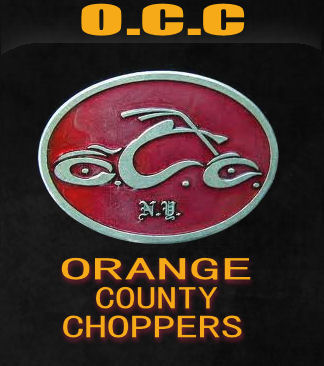www.indianmotorcycle.com
America's First Motorcycle: In the Beginning, a Genius Created a Pacer Bicycle
While the 2 3/4 horsepower single and the five horsepower twin have been retained, two new models will be presented and a seven horsepower twin. The radical changes of the Indian, however, will consist in a mechanical oiling device, free engine and two-speed gear, and a new spring fork.
-- New York Times,�January 9, 1910
By the time the above appeared, Indian motorcycle riders had been roaming the dirt trails and rolling along the wagon-wheel�ruts of America for almost a decade. Hitting the road in 1901, Indian was not only the first American motorcycle, it was the world's best-selling bike and, having introduced the first V-twin motorcycle to the world in 1907, the most technologically advanced. Harley-Davidson 1910 models, by contrast, were all singles, producing five horsepower or less.
The "Wigwam," as the company liked to call its factory, was in Springfield, Massachusetts, and the Indian "chiefs" were George Hendee, a pretty "fair" (winning 302 of 309 races!) bicycle racer/builder and Carl Oscar Hedstrom, an engineering genius who designed and hand-built the first running prototype, a 1.75 horsepower single with a then-revolutionary chain drive, in under six months.
Originally manufactured under the corporate banner of the Hendee Manufacturing Company, which was later reincorporated as the Indian Motocycle Company (an apparent Americanization of the European style of hyphenated motorcycle company names -- i.e. Moto-Guzzi), early Indians were inspired by Hedstrom's work with "pacing" bicycles.
Quite possibly the first application of the science of aerodynamics in racing, pacers were tandem units intended to run ahead of the racers to split the air stream and lessen wind resistance. Even with two ultra-cardiovascularly fit riders peddling like mad, however, early pacers were so heavy and bulky the racers quickly caught up and passed them, thus defeating the whole purpose of the exercise. Designing a lighter, stronger pacer frame fitted with a small gasoline engine to add a bit of horsepower to the riders' peddle power, pacer bike builder Hedstrom caught the attention of bicycle racer Hendee and the rest, as they say, is history.
And what a history it is.
From 1901 to 1916, three years after a new Hedstrom-designed state-of-the-art, 400,000 square-foot "Wigwam" came online, annual production soared from three to a world-leading 41,000. With more than 20 American motorcycle manufacturers scrapping for business prior to the U.S. entry into World War I, Indian's market share was a staggering 40-plus percent.
Prior to the new factory's opening, in fact, Hedstrom's motors were so successful that Indian couldn't make enough complete bikes to satisfy demand and licensed the motor designs to numerous other manufacturers. Not surprisingly, most of those competitors quickly disappeared once Indian ramped up its production capacity and began keeping Hedstrom and his successors' innovations -- the first Big Twin motors, the first two-speed transmissions, the first adjustable front suspensions, the first electric lights and starters, and scores of others -- to itself.
Then as now, Indians and their riders were bound by emotional ties unusual in relationships between men and machines.�In part, this was by design. Almost a hundred years before the buzz phrase Customer Relations Management was invented, Indian's founders and their executives devoted an intensity of effort to CRM matched only by Henry Ford after the introduction of the Model T.
Thousands of Indian fans thronged dealerships throughout the country at annual Indian Day celebrations, while riders and prospective riders were warmly welcomed at the Wigwam decades before official tours became a staple at everything from sauerkraut plants to firearms factories. And, though it can't be proven scientifically, there is little doubt that the introduction of Indian's trademark Crimson Steed of Steel paint scheme in 1904 raised its riders' pulse rates and spirits considerably more than its major competitor's "gray fellow" styling of the same era.
There was also an unusual amount of loyalty between Indian and its riders. Hendee Manufacturing and, later, Indian Motocycle prided itself on producing bikes with the best "getting home without a breakdown" record in the then-infant motorcycle industry. In return, Indian riders rarely strayed far from the Wigwam, returning to it regularly for a new ride for themselves, their sons, even their grandsons.
In addition to building their street bikes to the highest standards attainable at the time, the motorcycle pioneers at Indian were strong believers in the theory that racing improves the breed and supported that belief with the most comprehensive factory competition program in the business.
Special racing motorcycles engineered with such advanced features as overhead cams and four-valve-per-cylinder engines were built, and the company sponsored entrants in virtually every major motorcycle event in America and abroad. Impressive results included land speed records, a sweep of the top three positions at the Isle of Man TT, and an unparalleled record of victories in every form of racing from board track to hill climbs.
Though Indian would pick up the competition baton and race it into countless winner’s circles in the decades following World War I, it would do so without either of its founding fathers, Hendee and Hedstrom both having chosen to leave the company rather than continue ongoing trench warfare with dissident investors.
Fortunately for the motorcycle riders of the world, what was arguably the best and brightest team of motorcycle designers and engineers ever assembled in one company remained camped in the Wigwam after Hendee and Hedstrom's departure. Indian's greatest years of technological innovation and performance were yet to come.














0 comentarios:
Publicar un comentario